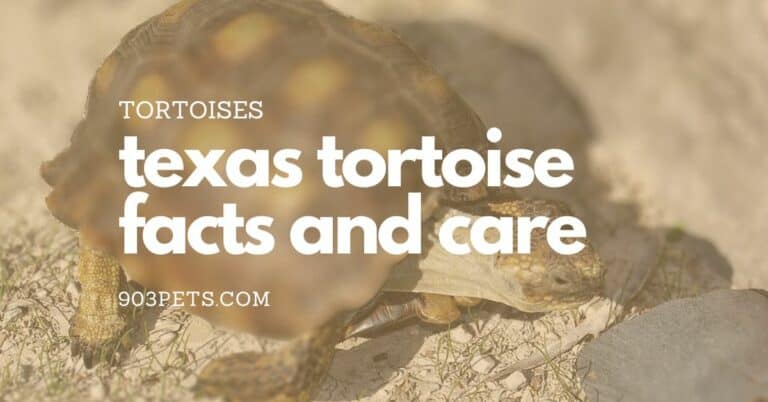Complete Guide To Russian Tortoise Lighting
When we got our first Russian tortoise, we were undoubtedly beginners and needed to know where to start. There are so many opinions on the internet and many conflicting recommendations regarding what lighting Russian tortoises need.
Be sure to know what to expect when you own a tortoise. We have taken all we have learned and put it together into this guide.
Pet Russian tortoises need lights that provide three things, a day/night cycle, a UVA/UVB source, and adequate heat. Mercury Vapor Bulbs (MVB) are the favorite since they provide all three needs in a single bulb when lit for 10-12 hours per day. For enclosures greater than 75 gallons, use one MVB bulb and one or more tube-type UVB bulbs.
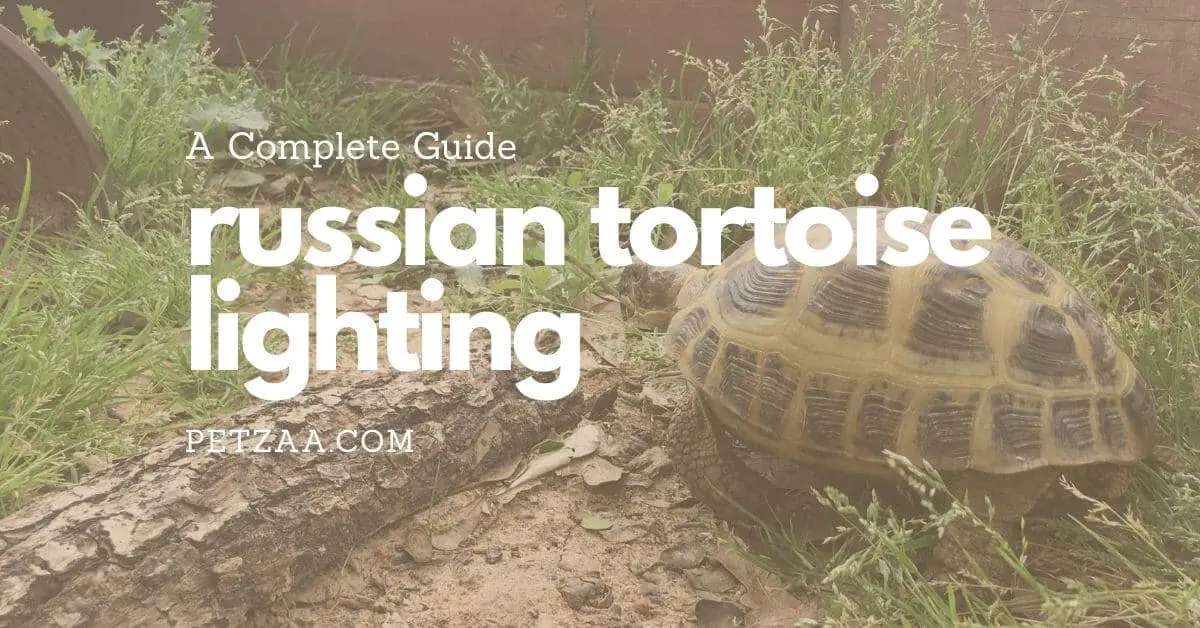
How you place the lights is just as crucial as getting the correct lights. We’ll show you how best to do this.
What Lighting Do Russian Tortoises Need?
A Russian tortoise is also known as Horsefield’s tortoise, Central Asian tortoise, Afghan tortoise, and four-clawed tortoise.
Agrionemys [Testudo] horsfieldii, Russian tortoise, is native to Russia, China, Kazakhstan, Pakistan, Uzbekistan, Afghanistan, Iran, and others. It is one of 56 tortoise species still living on Earth.
In these regions, Russian Tortoises experience a dry climate that has seasonally variant temperatures. In hot months, native temperatures can get over 100F, and in cold months the temperatures can go below freezing 32F.
Lighting for your pet Russian tortoise needs to accomplish three things, simulate day/night cycles, provide proper temperatures, and provide needed UVB light.
1. Simulate Night/Day Cycles For Russian Tortoises
Just like humans, tortoises need a natural rhythm of day and night cycles. These cycles help produce a pattern for each day.
Tortoises have a highly accurate biological clock, driven by the cycle of day and night.
This biological clock encourages feeding, basking, foraging when it is light out. And when the light fades to darkness, your tortoise will enter a time of burrowing and sleeping.
For year-round activity, Russian tortoises will thrive with 10-12 hours of daylight and 12-14 hours of nighttime.
Supplemental lighting can help address this need.
2. Provide Proper Temperatures For Russian Tortoises
Keeping an ideal environment for your Russian tortoise is vital for having a healthy, long life.
Ideally, you want to have a daytime basking area that reaches 90-95F. This temperature provides a Russian tortoise’s ability to increase its internal body temperature, which results in peak activity levels.
Remember, temperatures that are too high are unhealthy and may result in aestivation, a state similar to hibernation when environments are not suitable.
At night, your tortoise will love having a temperature that is between 58-70F. Keeping the temperature from getting too low will help prevent the lowering of their metabolic activity and stave off winter hibernation.
Lighting can help solve the temperature issue.
3. Provide a source of UVA/UVB Light For Russian Tortoises
Russian tortoise, like all tortoise species, need UVB light to stay healthy. Many sources also suggest UVA coverage as well which UVB bulbs also emit.
Sunlight is a natural source of UVA and UVB light.
At the correct dosage, the UVB light helps the tortoise produce, synthesize Vitamin D. In turn, Vitamin D supports the tortoise to obtain calcium from the food it eats.
Calcium is essential for the proper growth and strength of tortoises.
While UV lighting may seem like the most complex lighting puzzle to solve, all your tortoise’s needs can be met well when done correctly.
Ok, now that we know the three purposes of lighting for Russian pet tortoises, let’s guide you through the details.
Is Sunlight Enough For Russian Tortoises
The first question someone might ask is, “do I need special lighting if I give my Russian tortoise natural sunlight daily?”
Yes, daily sunlight can be all your Russian tortoise needs. However, that assumes the level of sunlight where you are matches the Russian’s native habitat.
Remember, sunlight is a natural source of UVB light rays that your tortoise needs.
However, keep in mind that this is only for direct, no-interference sunlight. UVB rays will not effectively pass through glass or other materials. It needs to be natural, outdoor, direct sunlight.
If you choose the sunlight-only path, be sure you can achieve 90-95F spots during the day and around 58-70F at night. Ideally, sunlight should be available about 10-12 hours per day.
Depending on your climate, you might need to pair natural sunlight with a basking or heat lamp to maintain the optimal overnight temperature.
It is also crucial that natural sunlight is delivered daily. That means, every — single — day!
Of course, the occasional cloudy day happens, but remember, Russian tortoises come from an arid region. Sunlight must be plentiful and direct.
UVB Lighting For Russian Tortoises
As we discussed earlier, UV-B light is crucial for tortoises to acquire calcium from their food sources. Of course, that requires calcium-rich food sources, but that’s another topic.
For your Russian tortoise to get enough UVB, you should ensure the UVB bulbs are on for 10-12 hours per day. We have ours on a timer which makes it easy.
UVB bulbs do wear out. Even if you see visible light, it does not guarantee that the light is still producing powerful UVB rays.
Most manufacturers recommend replacing UVB bulbs after 6-12 months of daily use. We recommend changing them out every six months just to be sure.
UVB lamps come in three different kinds:
- Mercury Vapor
- Linear Tube
- Coil CFL
Buyers Tip: If the bulb does not specifically say UVB, it does not provide UVB light. You need a bulb that specifically says UVB.
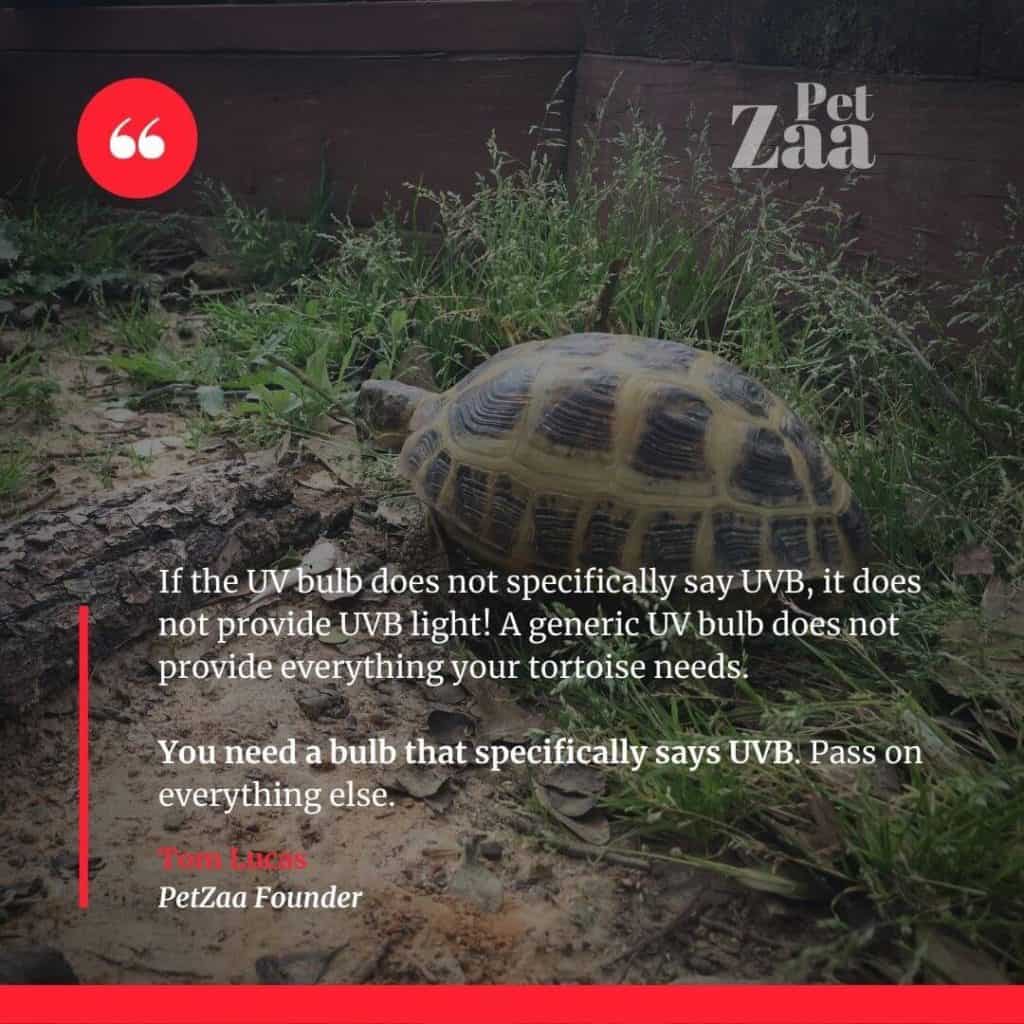
Mercury Vapor Bulbs (MVB)
Mercury Vapor Bulbs (MVB) have been around for a long time. They screw into a standard-size light bulb socket.
One benefit of Mercury Vapor bulbs is that they provide all three needed elements for tortoise lighting, visible light, UVB rays, and heat from a single bulb.
MVB’s are arc-tube type bulbs. A drop of mercury in the tube vaporizes when electricity passes through it. The vaporized mercury emits radiation, including UVB rays.
MVB’s must hang so that they point straight down. If you mount them incorrectly or jostle them while they are on, they will burn out quickly from damage.
Speaking of mounting Mercury Vapor bulbs, use a ceramic light socket with a reflector. Plastic sockets may melt from the heat and can cause a fire. The ceramic socket is made to withstand heat.
You can find ceramic sockets at most hardware stores or on Amazon.
You will not be able to use a dimmer with Mercury Vapor bulbs. Therefore, you cannot adjust the amount of heat or light they produce except by changing the bulb’s height from the enclosure floor.
Finally, MVB’s comes in two varieties, flood and spot coverages. A floodlight casts its rays over a wide area in a large cone emitted from the bulb.
A spot, or narrow flood, has a narrower beam of light and rays. Since the rays are in a more limited pattern, they are stronger and more focused. This focus allows a higher mounting point from the basking area.
Tube Type UVB
Another type of UVB light bulb is a tube-type bulb. These are long, straight bulbs similar to fluorescent tube bulbs.
The bulbs provide a broad, even UVB, and visible light source for a vivarium tortoise enclosure.
Tube UVB bulbs do not provide much heat, and you will need additional heat sources in the Russian tortoise environment.
These bulbs come in lengths from 12” – 46”. Many UVB tube bulbs will fit standard T5 or T8 fluorescent light fixtures.
These fixtures are easy to obtain at any hardware store. You can order UVB tube lights from a pet store, Amazon, or an online specialty retailer.
Again, a key benefit of UVB tube bulbs is their ability to shine UVB evenly across a large area, albeit at a lower level than an MVB spotlight.
Compact Fluorescent Type UVB
You may be familiar with the Compact Fluorescent Light bulbs that are in most homes today. They have a spiral, helical, tube that allows them to fit in a standard light bulb fixture.
There are manufacturers today that make UVB bulbs in this have CFL compatible, helical tube version.
Until recently, spiral UVB bulbs are known to cause eye issues, including blindness, in tortoises. New bulbs from some high-quality manufacturers reportedly have resolved these issues.
It is difficult to know if the bulb you are purchasing is a new type or old.
The jury is still out on the safety of newer helical UVB bulbs when used for reptiles, including Russian tortoises.
We suggest that you avoid CFL-type, spiral, UVB bulbs until further research about their safety is available.
Basking Lamps For Russian Tortoises
Basking lamps, otherwise known as heat lamps, provide both visible light and heat but do not offer UVB rays.
We’ve already said that Mercury Vapor bulbs are multipurpose, providing visible and UVB light while also producing heat. These bulbs may be great for that basking spot.
While not as flashy as all those other reptile marketed lights, you can produce a proper basking spot by placing a flat rock directly under a standard 100-125 watt incandescent light bulb.
Again, we recommend a ceramic light socket for this to reduce the risk of fire.
To adjust the temperature of the basking area, you can raise or lower the bulb. Be sure to always keep the bulb out of reach of your tortoise to reduce the risk of injury.
It will be essential for you to monitor the basking area’s temperature over time to ensure it remains ideal.
Night Time Heat Lamps for Russian Tortoises
Russian tortoises do not typically need nighttime heat sources when kept indoors. They come from a region with hot days and cool nights.
In outside temperatures in certain climates, you may need to provide supplemental heating.
Ceramic heat lamps are a great solution to this problem.
Ceramic heat lamps produce no visible light but produce heat through resistance coils embedded in the ceramic.
Like all lighting, be sure to keep the heating lamp out of reach of your tortoise at all times. Measure the nighttime bedding spot to ensure you are at an ideal 58F-70F.
As with all of the heat-emitting lamps we’ve discussed, use a ceramic light socket to reduce fire risk.
How To Measure Basking and Night-Time Temperatures?
Measuring your Russian tortoise environment’s heat and humidity is an essential step for all pet parents.
Typically a pet store will tell you to buy a thermometer and hygrometer to mount in the enclosure.
While placing a temperature gauge in the enclosure will give a general sense of the temperature, we feel more comfortable with precise measurements.
That is why we choose to measure using a no-touch temperature gun.
A temperature gun allows you to walk up, point at an area, pull the trigger, and get a precise surface temperature. Yup, you can even take the temperature of your tortoise’s shell while in the basking area.
Did you know you can even monitor temperature and humidity when you are away?
Taking a trick out of my I.T. professional life, I have used a data center environmental monitoring tool called RoomAlert from AVTech.
I can connect remotely to monitor the current readings and even get email/SMS alerts when environment settings go outside a range we want.
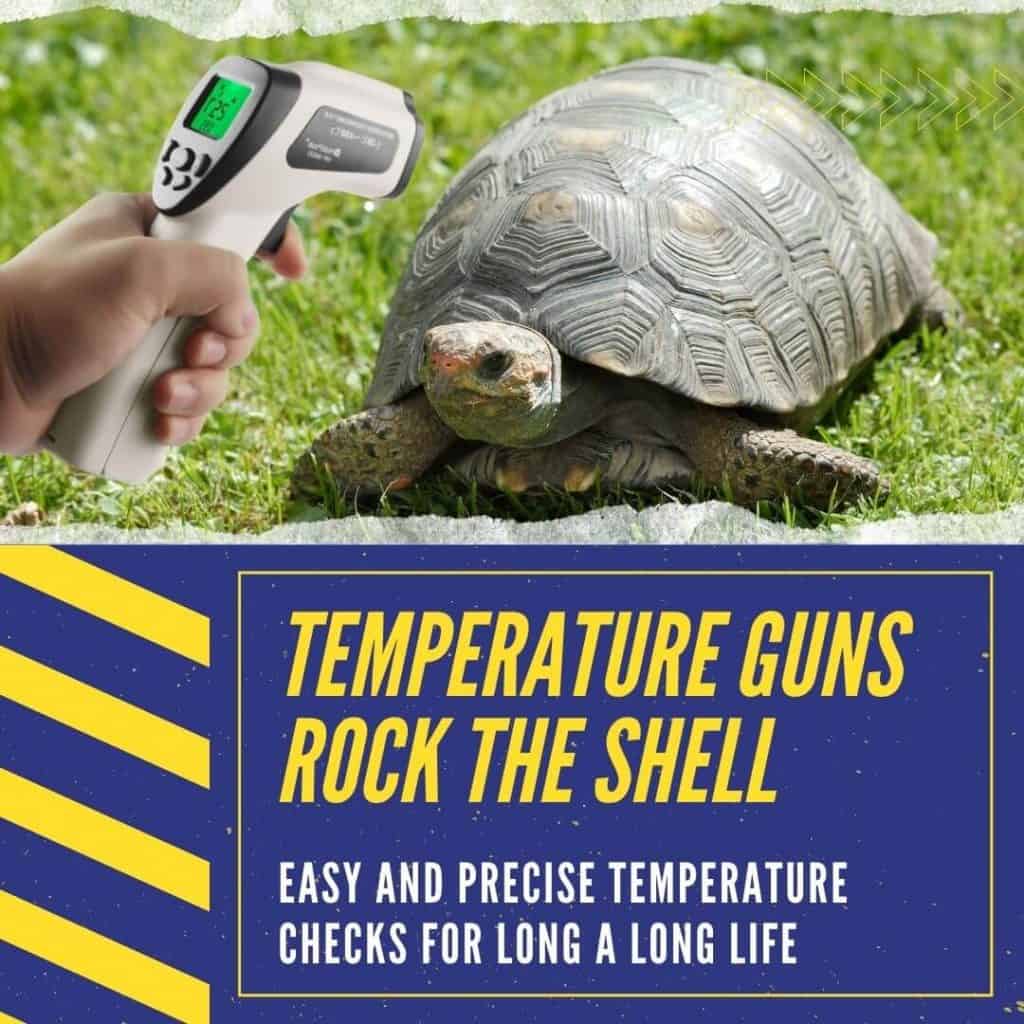
Where To Mount Lamps For Russian Tortoises?
Each manufacturer has its specifics about how the bulb should be mounted.
As a general rule, all bulbs should be mounted at least 12” above the tortoise at any given point.
Depending on your environment’s size, you may likely have a Mercury Vapor basking light on one end of the enclosure for the basking area. On the other end of the enclosure, a UVB tube bulb. This combination gives excellent UVB coverage across the entire habitat while also providing heat when need and an escape from the heat on the other end.
Mercury Vapor bulbs must be mounted 90° to level above the enclosure. Since MVB bulbs produce heat as well, placing above basking areas or cold nighttime areas is best.
Tube UVB bulbs are best in a compatible fluorescent holder with a hood. The hood keeps the extraneous visible and UVB light from flooding the room outside of the enclosure.
Spot type basking bulbs are placed higher, but never lower, than 12” above the tortoise. The narrow, focus light and heat can be intense, so be careful and test the setup before placing your tortoise in the area.
If your bulb produces heat, only use ceramic light sockets with a non-flammable metal reflector.
What Is The Best Lighting Setup for Russian Tortoises?
It all depends on your enclosure. Let’s assume a 4’ x 5’ indoor enclosure to give a practical setup.
In one corner, the basking corner, we’ll place a Mercury Vapor bulb in a ceramic light socket mounted perpendicular to the floor. We’ll start at 24” inches above the flat rocks and adjust as needed.
Then ½ -¾ of the length to the cool end, we’ll place two 24” T5 10.0 UVB bulbs, one on each side. This allows them to be mounted 24” above the floor of the enclosure.
If you using a lower output T8 bulb, mount them at 18” above the enclosure floor.
Mounting both the basking lamp and the UVB bulbs at the same height may be more convenient since that could be the enclosure’s height.
Indoors, there is no need for additional heating or lighting at night for the Russian tortoise, so that means there is nothing else to the lighting setup except monitoring the temperatures.
If the basking area does not reach 90-95F, you can try lowering the MVB bulb to 20” and then to 18”. If that still does not do it, you can add a second basking lamp.
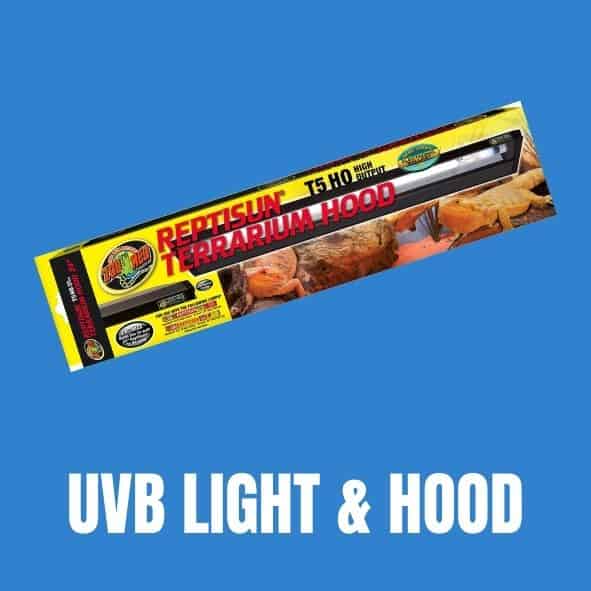
Reptisun Terrarium Hood
We’ve found that the Reptisun Terrarium Hood with UVB bulb is a great UVB Bulb hood for use in tortoise and reptile enclosures.
In our application, we upgrade to a 10.0 UVB bulb since we were about 24″ above the enclosure surface.
Related Questions
Can tortoises see UVA or UVB light? Yes, it is believed that tortoises can see UV light, unlike dogs. This includes those “night-time heat lamps” that are blacklight bulbs. Don’t use those for night-time heat as they are still visible light to a tortoise.
How many watts does a Russian tortoise need? The minimum wattage bulb for a 75-gallon or larger enclosure is 100 watts.
If you think your pet is ill, call a vet immediately. All health-related questions should be referred to your veterinarian. They can examine your pet, understand its health history, and make well informed recommendations for your pet.
903pets.com Staff


![A Beginners Introduction To Tortoises As Pets [Read Before You Buy] 6 Complete introduction guide to tortoises as pets. Read before you buy.](https://cdn-0.903pets.com/ifywhoft/2021/03/Complete-Guide-Introduction-To-Tortoises-Before-You-Buy-tiny-768x402.png)
![Indoor Tortoise Enclosures - What You Need To Know [2022] 8 complete guide to indoor tortoise enclosures cages and habitats](https://cdn-0.903pets.com/ifywhoft/2022/03/indoor-tortoise-enclosue-complete-guide-768x402.png)
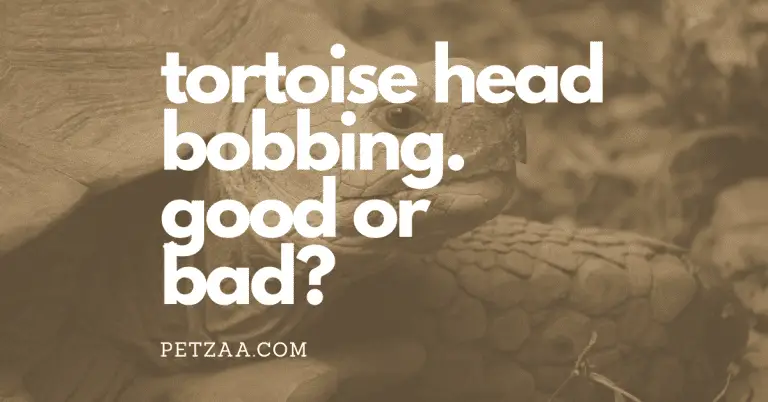
![6 Reasons Why Tortoises Squeak, Croak, and Quack? [Tips] 12 why does my tortoise squeak and quack](https://cdn-0.903pets.com/ifywhoft/2021/02/Why-Is-My-Tortoise-Squeaking-tiny-768x402.png)
![How Often Should You Clean An Indoor Tortoise Enclosure? [Schedule] 14 tortoise - indoor cage cleaning schedule - how often tiny](https://cdn-0.903pets.com/ifywhoft/2022/03/tortoise-indoor-cage-cleaning-schedule-how-often-tiny-768x402.png)
